KIKO GOATS VS BOER GOATS
Here are some of the reasons we believe Kiko's and Kiko crosses make the best meat goats. We compare Kiko Goats with Boer Goats. The video below gives a great overview of the the Kiko Advantages.
Some of our Personal Experiences
The attached charts show what we have experienced personally with our Kiko's. They have proven to be very hardy, good breeders, great mothers, and require no special care. We have no shelters for our goats and they get along just fine. A few years ago we had 22 kids born one night in the rain and 35 degree weather. ALL 22 SURVIVED.
The survival rate for our Kiko kids is great. We rarely have a problem and when we do it is often caused by us, not the goats. It is exciting to see the survival instincts of these babies. They are usually up and nursing in about 10 minutes. Sometimes, they will be trying to nurse before they have stood up for the first time.
We usually wean at 90 to 100 days and we don't normally lose any kids at weaning time. Our ratio of live births to weaning is almost 100%.
I think this is the most dramatic chart of all. It clearly shows the hardiness of the Kikos. Compared to the Boers the Kikos weaned almost twice as many kids at weaning age than the Boers. The Kikos weaned about 1.6 kids per doe exposed to a buck compared to less than one kid per doe exposed for the Boers. Even if you don't consider any other factors, since we are in the business of making money, just look at how many more kids you have to sell with the Kikos.
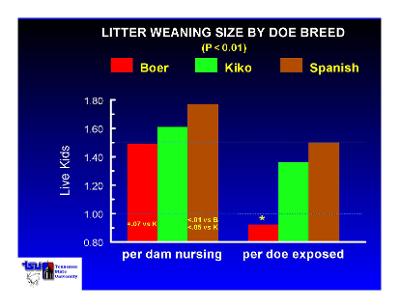
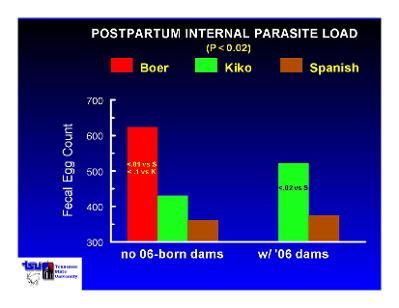
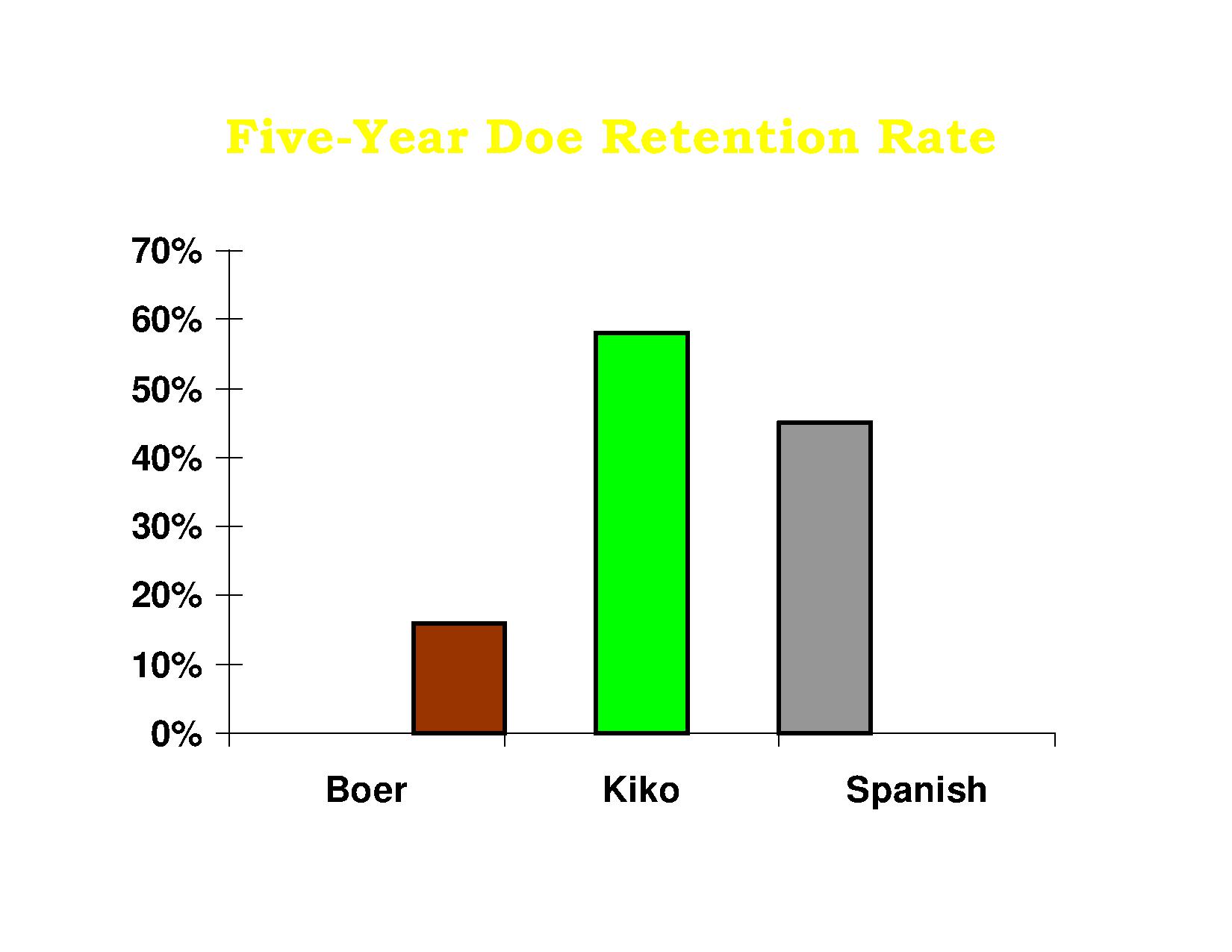

These charts show the results of a 5 year study by Richard Browning PHD, conducted at Tennessee State University of the Kiko, Boer, and Spanish breeds on the campus of Tennessee State University.

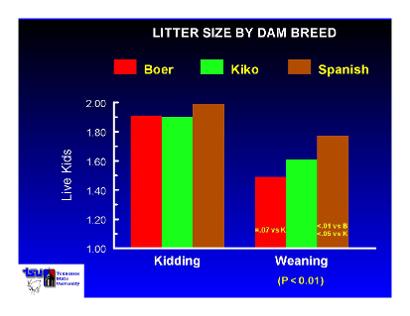

Live Pre-Harvest Weight
On the chart below, the browns indicate Boers and crosses with Kiko and Spanish, the blue, Kikos and crosses with Boers, and Spanish and the black, Spanish and crosses with Boers and Kikos. Note the dramatic results of crossing the Kikos with either the Boer or Spanish Goats.
This chart also shows the Kiko Advantage of about 8 pounds more weight per kid at harvest. More money for the goat rancher at no extra cost.
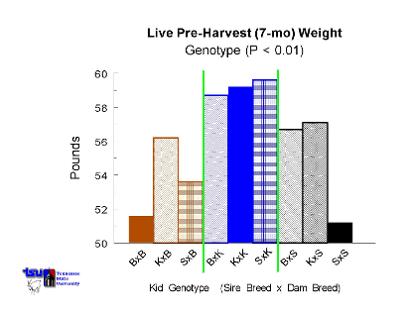
These studies were also compiled by Tennessee State University. The three charts below indicate the Kiko doe proficiency. The charts indicate that the litter weight per doe is highest for the Kiko and the retention rate for Kiko does is highest. The last chart also indicates that the Kikos outperform the Boers in the humid southeastern states.